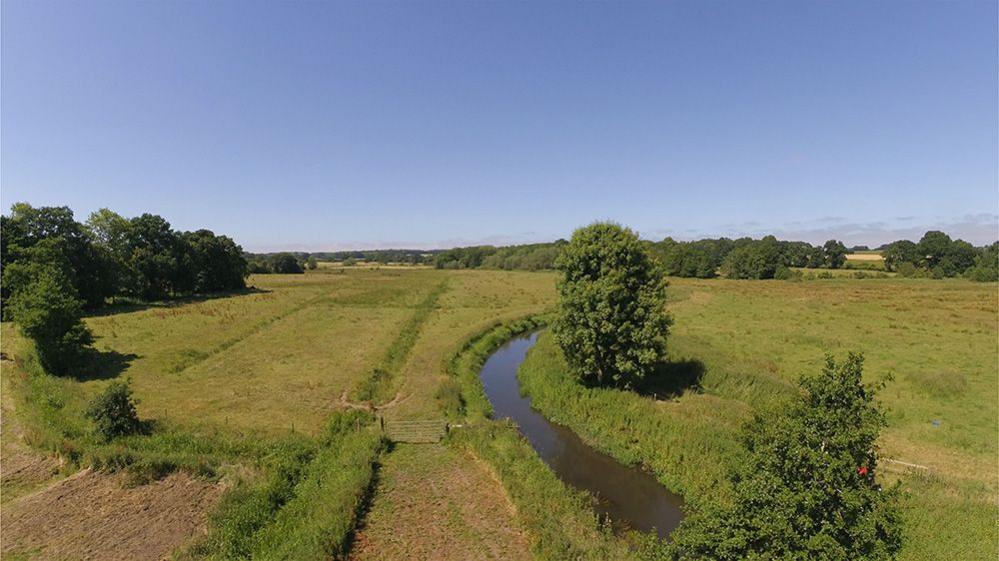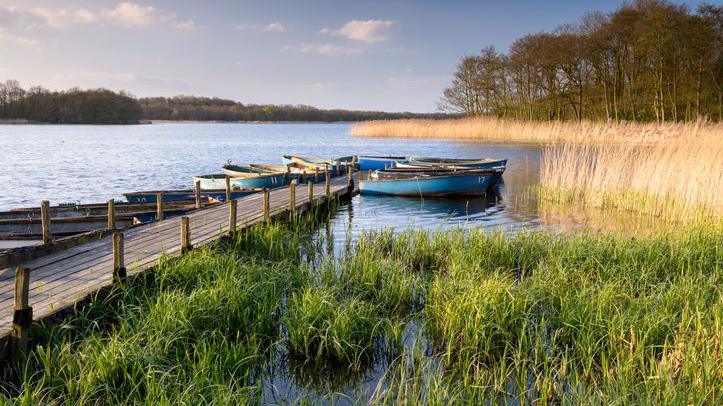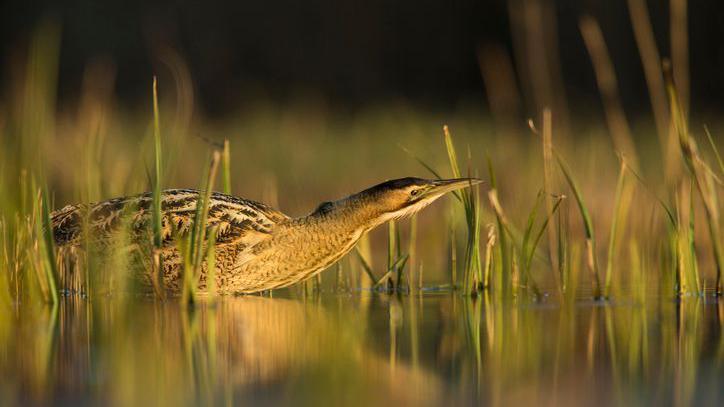How saving chalk streams can help the environment

A plan to protect this super-rare stream in Norfolk has been successful - here's what it can teach us about the environment
- Published
A conservation project on one of the world's rarest freshwater habitats has been successful.
A chalk stream - which comes from underground chalk reservoirs - is a very rare and special water source.
A restoration project of a six-mile stretch of a chalk stream that feeds into the Norfolk Broadsstarted in 2018, using fallen trees and branches to look after the river.
A big part of the project has also been managing invasive species.
More environment news:
People asked to report sightings of Asian hornet
- Published20 May 2024
Earth Day 2024: What's it all about?
- Published18 April 2024
Is bottom trawl fishing bad for the environment?
- Published4 February 2024
Why chalk streams are so special

The Norfolk broads is home to lots of unique bodies of water
According to the WWF, there's only around 200 chalk streams in the world.
A lot of them are in England - but many of them were found to not be in good health.
Chalk soaks up water, so it can store water on drier days. When water is released from the chalk, it's rich in minerals which helps feed nearby plants and other wildlife like fish and insects.
The Wildlife Trust says they provide habitats for some of England's endangered species like the white-clawed crayfish.
Other creatures that love chalk streams are dragonflies and mayfly larvae, and owls, woodpeckers and bats live in the trees around them.
How do you restore an environment?

Restoration projects can help protect Norfolk's local wildlife, like this bittern
Nature experts have a term for this kind of restoration - conservation.
It's all about looking after a natural space and making sure it can thrive in the future.
For the chalk stream, the National Trust's Riverlands programme used materials already in the environment like branches and fallen trees to shape the stream.
This would let water move into the right places. It also meant they could use the stream to prevent flooding, by slowing it down during heavy rain.
